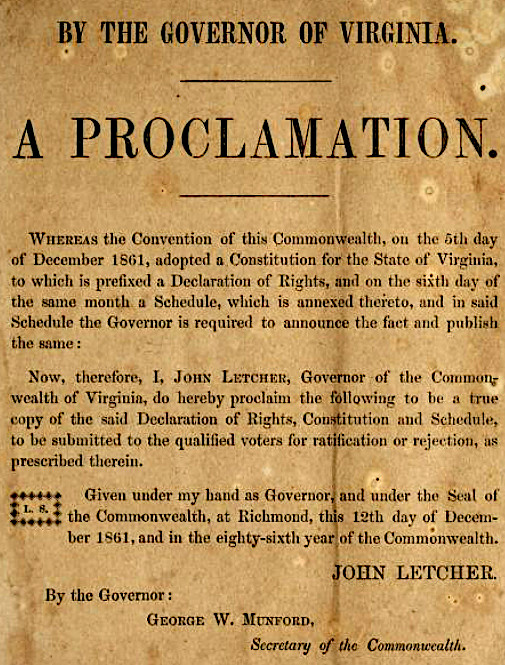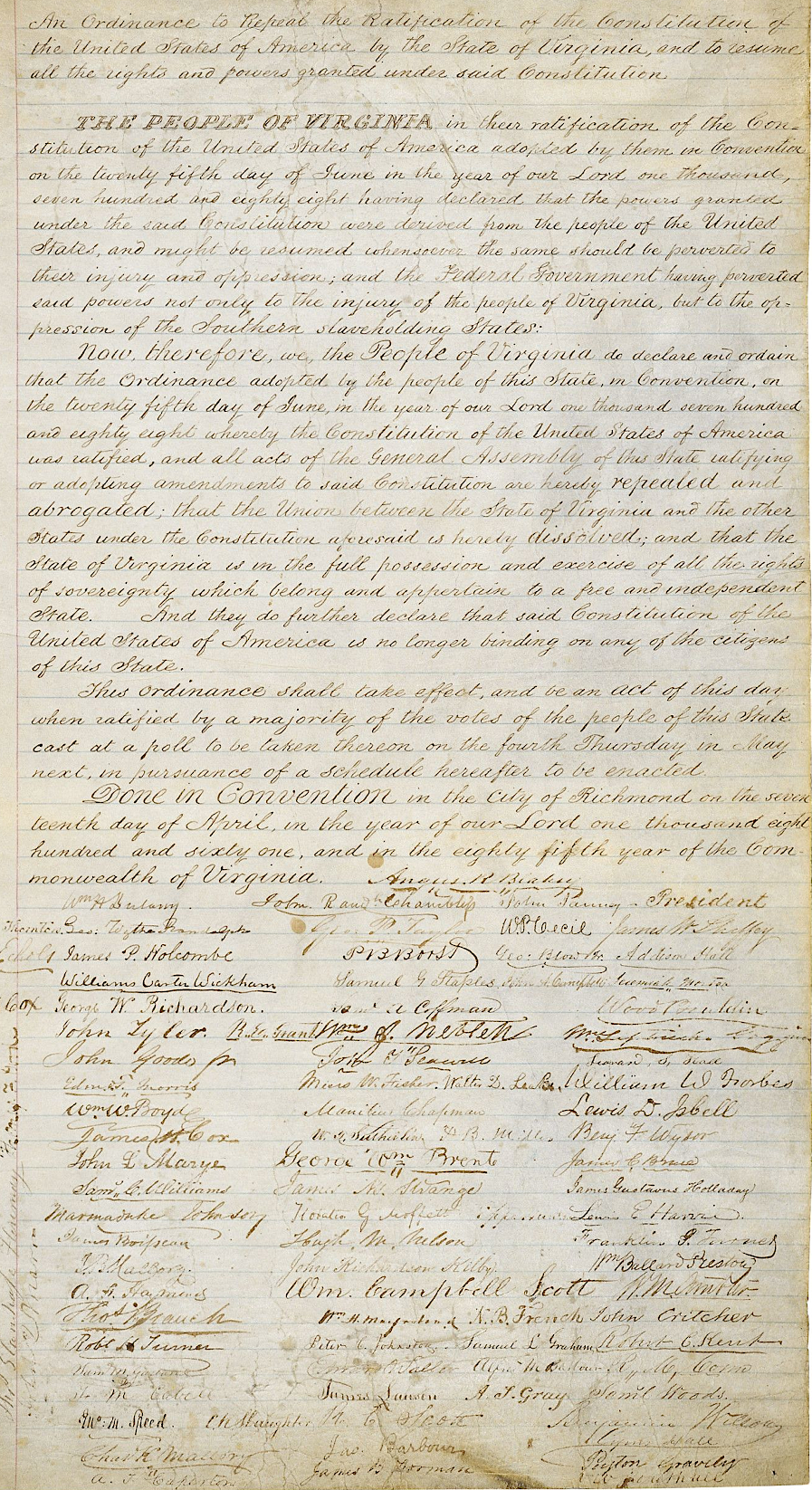
the 1861 Constitution was completed in December, 1861 by the special convention which had adopted the ordinance of secession the previous April
Source: Internet Archive, New constitution of Virginia: proposed for adoption, by the convention

the 1861 Constitution was completed in December, 1861 by the special convention which had adopted the ordinance of secession the previous April
Source: Internet Archive, New constitution of Virginia: proposed for adoption, by the convention
There was no process for revising the 1850 constitution other than the vote scheduled in 1865. However, in 1861 a special convention approved the ordinance of secession withdrawing Virginia from the United States.
To attract votes for secession from western delegates, that same convention proposed a constitutional amendment to revise Section 23 in the 1850 constitution. That section continued to limit the tax on enslaved individuals to a maximum of $300. As that form of property increased in value, the sectional imbalances increased.
Western landowners complained that their property was subject to ad valorem taxes, with taxes increasing steadily as land values increased. There was no maximum tax on land, unlike the $300 maximum on "slave property." Failure to tax that property the same way provided an unfair benefit to the slaveowners who were concentrated east of the Blue Ridge.
Advocates of secession proposed to amend the 1851 state constitution and change the way slaveowners paid taxes. That change was expected to appease western voters, most of whom did not rely upon uncompensated labor. Passage of the secession ordinance would be more likely if western voters saw a connection between leaving the Union and rebalancing the tax burden.
Voters did approve the amendment to Section 23 and agreed to tax slaves at market value (ad valorem) on May 23, 1861. At the same time, Virginia voters approved secession. After the amendment, the state constitution said:2
The 1861 special convention that approved secession chose to stay in existence and write a completely new state constitution later that year. At a minimum, joining the Confederacy required purging references in the state constitution to the United States and incorporating references to the Confederate States of America.
The Secession Convention reconvened in December 1861 and drafted a new state constitution before concluding on December 6, 1861. Without representatives from the western counties, the new version proposed to return to holding annual sessions of the General Assembly and allowing the legislature to elect the governor, if no candidate got a majority in the election.
It also proposed reinstating the requirement to own property before being allowed to vote, and eliminating direct election of judges by allowing the General Assembly to make those choices. Those proposals would have concentrated more political power back in the legislature dominated by people living east of the Blue Ridge, and undone accomplishments of the legislators representing districts west of the mountains in the convention that wrote the 1851 constitution.
The proposed constitution retained the ban on members of the clergy being elected to the General Assembly. That prohibition had been included in every version of the state constitution since 1776.

the 1861 Constitution would have required governors to have been born within the Confederate States of America
Source: Internet Archive, New constitution of Virginia: proposed for adoption, by the convention
The 1862 ratification vote included both the proposed constitution and a separate proposal to limit future voting in Virginia to taxpayers. Since the 1851 constitution had eliminated the requirement of voters to own a certain amount of property, all white males over 21 years of age were eligible to participate in the ratification vote for the new constitution on March 13, 1862.
That election coincided with the Peninsula Campaign of the Union Army under General George McClellan. In that crisis, Governor Letcher directed the militia in all counties/cities to "without waiting for further orders [m]ove at once to the places designated." The few Virginians who managed to vote rejected the proposed new constitution by a close vote (13,233 in favor, 13,911 opposed) and also rejected the limitation of the franchise.
As a result, throughout the Civil War the Virginia constitution included references to the United States of America. Virginia's fundamental law had no references to the Confederate States of America or its constitution.1

the 1861 Constitution was drafted after the Secession Convention approved the Ordinance of Secession
Source: National Archives, Ordinance of Secession of the Commonwealth of Virginia